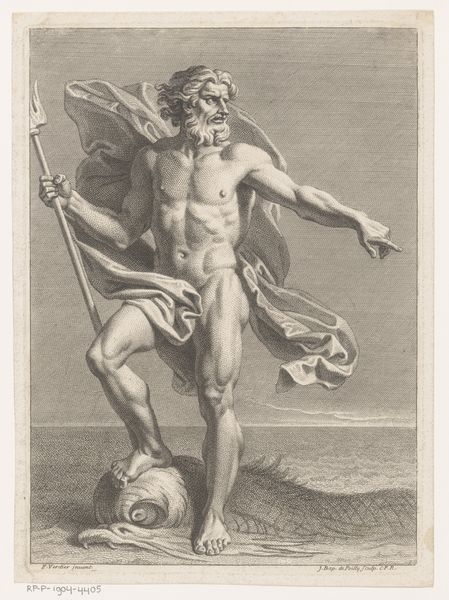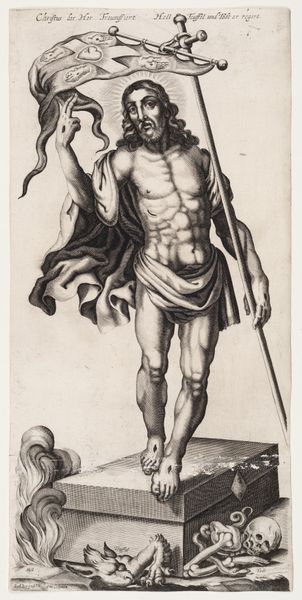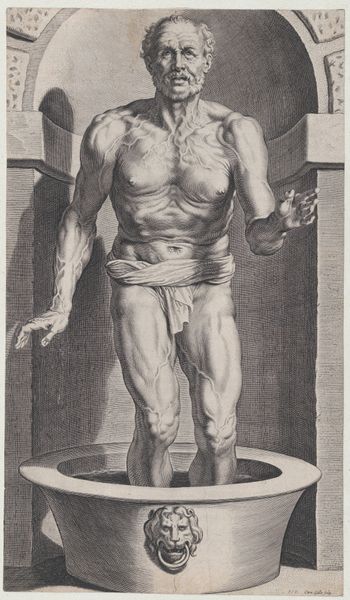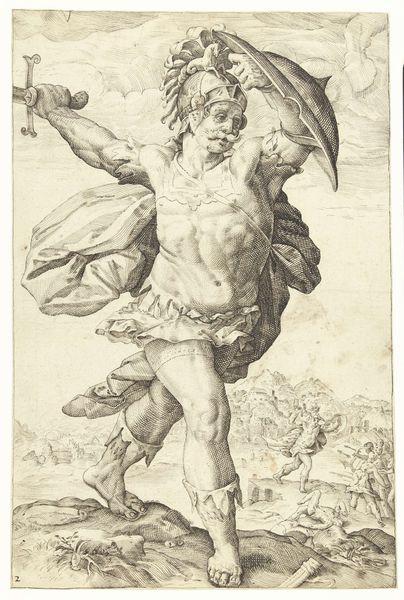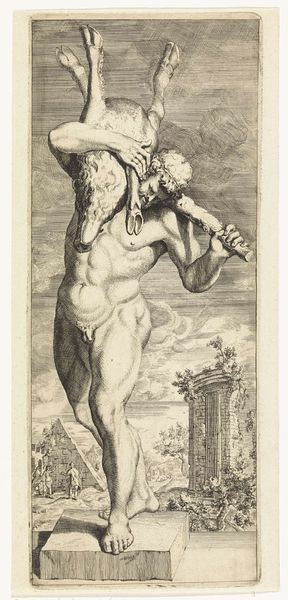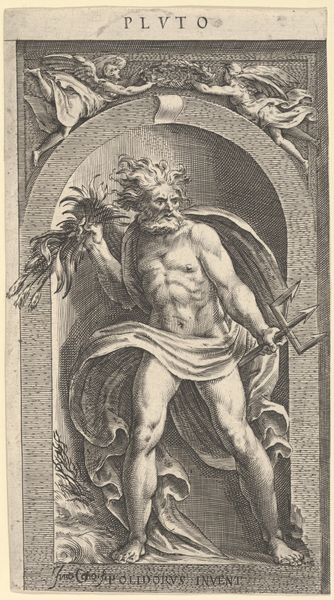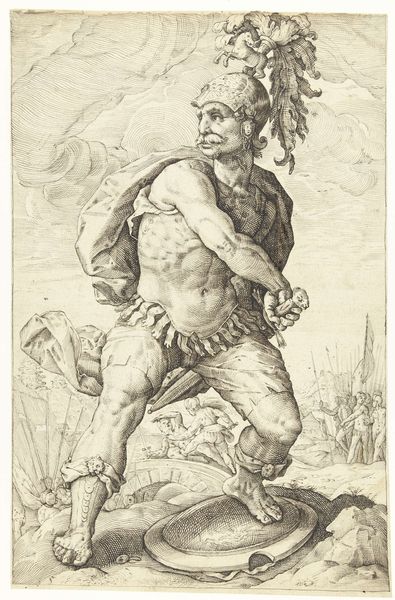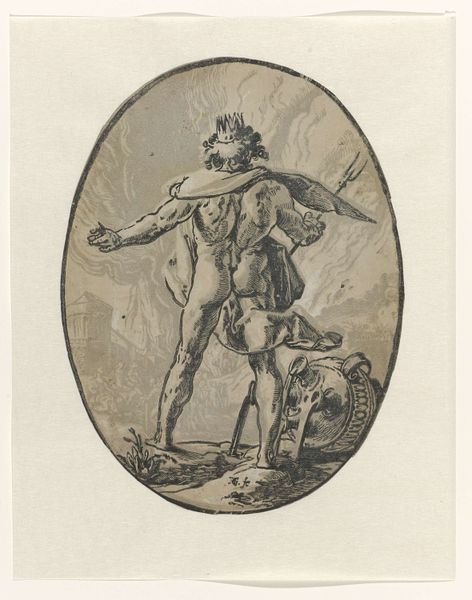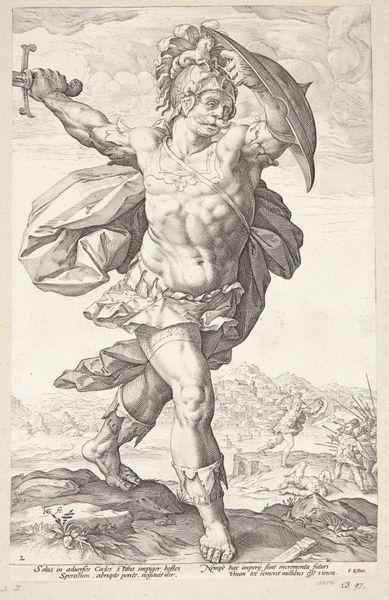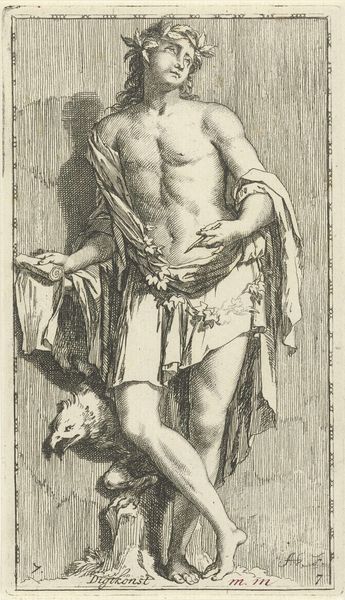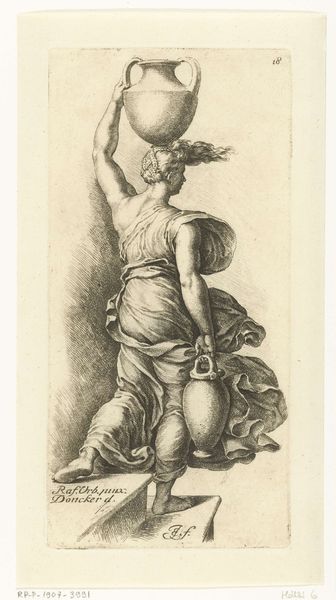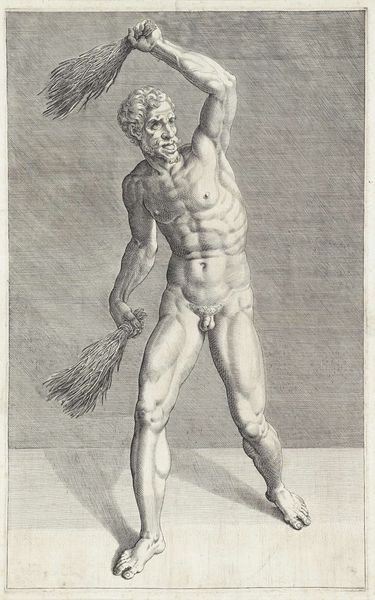
print, engraving
#
baroque
# print
#
landscape
#
figuration
#
engraving
Dimensions: height 447 mm, width 201 mm
Copyright: Rijks Museum: Open Domain
Editor: So, this is "Christus als de Goede Herder," or "Christ as the Good Shepherd," from somewhere between 1625 and 1670, made by Mattheus Borrekens. It’s an engraving, so a print. I’m immediately struck by the figure’s almost laborious posture; there’s a lot of effort conveyed. How would you interpret this work? Curator: The means of production for a piece like this were deeply tied to the socio-economic status of the time. Borrekens, by creating this engraving, engaged in a craft that served a specific demand. What kind of person or workshop do you imagine might have commissioned this? Consider who this image, reproduced via the printing press, was *for*. Editor: Hmm, probably someone fairly wealthy, who could afford art like this, or maybe it was intended for a church? But does the accessibility of a print challenge traditional ideas about fine art versus craft, since it's reproducible? Curator: Precisely! And consider the raw materials involved - the paper, the ink, the metal plate. Where did these come from, who produced them, and what was the environmental impact of their extraction and refinement? That becomes part of the "meaning" itself, wouldn't you say? Editor: Absolutely. Thinking about the labor behind even seemingly simple materials puts the work in a completely new perspective. I'd never considered that with religious art of this period before! Curator: Looking at the artistic techniques alongside these elements—how does the engraving’s line work contribute to this feeling of labor? Editor: Well, the very fine, etched lines build up this really strong sense of weight. You see the effort both in the subject and the *making* of the image. Curator: Exactly. So thinking materially reframes how we read these pieces of art, it accounts for how images of power, in this case religious power, get distributed and what materials and social structures enabled the process. Editor: Thanks, I see it very differently now! Looking at art as more than just image.
Comments
No comments
Be the first to comment and join the conversation on the ultimate creative platform.
